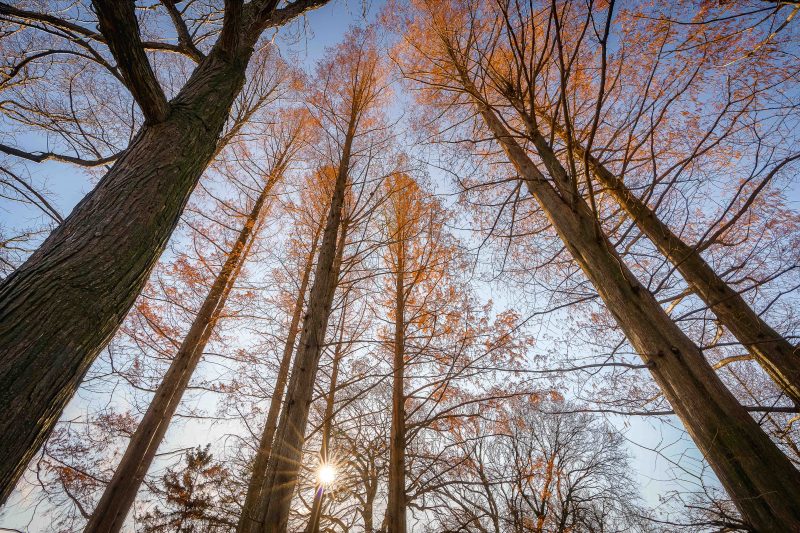A Botanical Puzzle of the 20th Century
Tori Lewis is the Manager of Interpretive Content at The New York Botanical Garden.

Metasequoia glyptostroboides in the Benenson Ornamental Conifer Collection
National Puzzle Day may bring to mind jigsaw challenges that feature colorful paintings, cityscapes, and complex photographs for you to reassemble—but brain-teasing conundrums fit in just as well, such as the story of the Metasequoia, a tree whose “extinction” puzzled botanists across the study of 100-million-year-old fossils, national boundaries, a World War, and a surprising forest discovery.
In Japan in 1941, paleobotanist Shigeru Miki (1901–74) discovered a conifer genus preserved in fossils that had been collected across the Northern Hemisphere. The fossilized plant resembled the redwoods of California, so Miki called his discovery Metasequoia (“similar to Sequoia”). Since the fossils dated from the Mesozoic Era, more than 100 million years ago, scientists assumed that Metasequoia was extinct.
In China two years later, botanist and forester Zhan Wang (1911–2000) collected leaves and cones from an unusually tall conifer growing in a remote area in central China. He and his colleagues
determined that these trees represented a new, unnamed genus. Though he did not know it, Wang had actually stumbled upon the last living Metasequoia.
In 1946, after World War II, botanists in Beijing made the connection between Wang’s and Miki’s discoveries, and Chinese and American botanists collaborated to distribute Metasequoia seeds around the world. These trees, planted from those seeds in 1950, continue to play an important role in NYBG’s scientific research. Living fossils—plants that have changed very little in millions of years—help scientists trace the evolution of plants. NYBG botanists use samples from these trees and other conifers in the collection to study plant genetics and evolutionary history.
It’s just one of the many and varied histories to find among the trees of NYBG.
SUBSCRIBE
Enter your email address to subscribe to this blog and receive updates on new posts.











